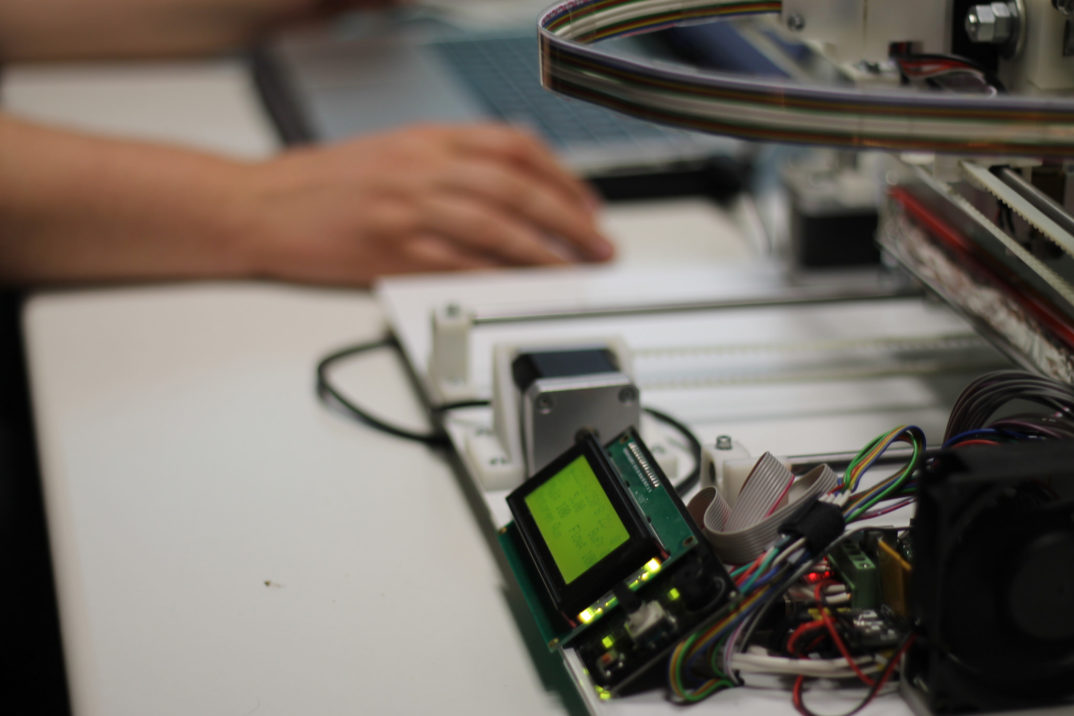Debating the Permissibility of Printable Guns

This article has a set of discussion questions tailored for classroom use. Click here to download them. To see a full list of articles with discussion questions and other resources, visit our “Educational Resources” page.
In 2013, Cody Wilson, a self-described anarchist, made headlines when he posted plans for a 3D printable pistol called “The Liberator” online. The state department intervened and shut down the site, but not before the plans for the weapon were downloaded over a million times. Wilson promptly sued the government. This week, the government reached a settlement with Wilson. The settlement is quite favorable to Wilson and other gun rights advocates—it allows Wilson and others to proceed with their mission to post the instructions online.
The 3D printable gun design instructs interested parties on how to print a handgun with the same material used to make Lego building blocks. The resultant guns do not have serial numbers, making them difficult if not impossible to trace. In the intervening time, Wilson has produced additional plans—plans for a Berretta M9 handgun and an AR-15. The M9 is a weapon used by the U.S Military and the AR-15 is a weapon commonly used by mass shooters.
Many gun rights advocates are quite pleased with the settlement. In their view, the government is moving in a dangerous direction with respect to Second Amendment rights. Discussion of increased gun control regulation is on the rise, and many fear that responsible gun ownership will be restricted or prohibited entirely based on the actions of an exceptionally small violent minority. 3D printable guns will allow gun advocates to produce guns that will not face government regulation. What’s more, if the government is not aware that a citizen has a weapon, they’re very unlikely to attempt to take that weapon away. Those who support the availability of printable gun plans frequently argue that guns are important for defense of life, liberty, and property. If they can print a gun or guns that the government doesn’t know about, they never have to fear that they’ll lose the protection that the gun affords.
Others support the settlement for reasons that are more theoretical. Some view the government’s initial ban as a dangerous restriction of free speech rights. Wilson was engaging in a speech act when he posted the plans—he was making information available to the public. They argue that the government should not be restricting speech on the basis of content. It is worth noting that, though the technology involved in this case makes the case unique and unusual, the First Amendment question with respect to the availability of dangerous information is far from new. In 1969, in Brandenburg v. Ohio, the Supreme Court ruled that inflammatory speech cannot be restricted by the government unless it is “directed to inciting or promoting imminent lawless action and is likely to incite or promote such action.” Free speech supporters of Wilson argue that his actions are no more likely to incite violence than traditional forms of gun ownership.
Those with libertarian political leanings may also defend Wilson’s actions for theoretical reasons. They argue that governments should only be concerned with protecting the negative rights of citizens—the rights to life, liberty, and property. If private citizens want to print guns for non-violent, personal use, they should be free to do so. There is no reason to think that all, or even most, of the motivations people might have for printing weapons are nefarious. Many may simply want to test out a new technology in the service of a gun hobby. They argue that the government should not concern itself with such private actions.
On the practical side, many supporters of Wilson argue that fear about printable guns as a serious threat to public safety is fear of an imaginary bogeyman, often shouted about for reasons that are political. In truth, they argue, 3D guns are expensive to produce, time and labor intensive, and are made of material that is so weak it is likely to shatter in the course of one shot. The resulting shrapnel is potentially dangerous to the person firing the weapon. It is already legal for citizens to construct their own guns. There is no reason to believe that dangerous criminals will clamor in the direction of this method of producing them.
Many responded to the news of the settlement with utter astonishment—to them, it seems self-evident that untraceable, 3D printable guns are an atrocious idea. One need not be opposed to guns more generally to think that what Wilson has done and plans to do is exceptionally dangerous. Many responsible gun owners believe that there should be some regulations when it comes to gun ownership. These regulations save lives. Even if printable guns can only fire one shot, one shot can kill someone.
Those opposed to the settlement argue that it is deeply problematic that there are no background checks required for printing a gun. Convicted violent felons could print guns. People with a history of violent mental disorders could print guns. The government has a responsibility to look after the safety of its citizenry. Deadly weapons shouldn’t fall into the wrong hands.
Opponents also argue that even if the government shouldn’t typically involve itself in the private lives of citizens, the situation changes entirely when objects as deadly as guns are involved. Governments have an obligation to monitor and regulate exceptionally dangerous objects. What’s more, serial numbers on guns are frequently used to solve crimes. The government has the obligation to do its best to prevent violent actions from occurring, but, barring this, it has obligations to achieve justice for victims and their families when violent crimes do take place. Even if the guns involved in a crime aren’t destroyed when they are fired, they are made of material that is easily destroyed, making the recovery of the murder weapon involved in these cases impossible.
Finally, opponents of the technology and of dissemination of the plans point out that the Internet obviously isn’t just for Americans. Those who put these plans on the Internet may be contributing to violence in other countries and they may well be arming our enemies.




